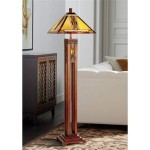Rug Mats for Vinyl Floors: A Comprehensive Guide
Vinyl flooring has gained considerable popularity due to its durability, affordability, and aesthetic versatility. However, maintaining the pristine condition of vinyl floors requires careful consideration, especially when using rugs. The undersides of certain rugs can react negatively with vinyl, causing discoloration, staining, or even damage. Therefore, selecting appropriate rug mats designed specifically for vinyl floors is crucial for preserving their longevity and appearance.
This article delves into the specifics of rug mats suitable for vinyl floors, exploring the materials, features, and considerations necessary to make informed purchasing decisions. The objective is to provide a thorough understanding of how to protect vinyl floors while enhancing the comfort and style of a living space.
Understanding the Risks of Incompatible Rug Mats
The primary risk associated with using inappropriate rug mats on vinyl floors lies in the potential chemical reactions between the materials. Some rug backings, particularly those made from rubber, latex, or PVC, can contain plasticizers or other chemicals that can migrate into the vinyl flooring over time. This migration can lead to discoloration, staining, or even the breakdown of the vinyl's surface. The severity of the damage often depends on the type of vinyl flooring, the composition of the rug backing, and the duration of contact.
Furthermore, certain rug mats can trap moisture underneath, creating a breeding ground for mold and mildew. This is particularly problematic in humid environments or areas prone to spills. The trapped moisture can also weaken the adhesive used to install the vinyl flooring, potentially leading to lifting or bubbling.
Another consideration is the texture and abrasiveness of the rug backing. Some rough surfaces can scratch or scuff the vinyl floor, diminishing its shine and creating unsightly marks. Therefore, selecting a rug mat with a smooth, non-abrasive backing is essential to prevent physical damage.
Key Features of Suitable Rug Mats for Vinyl Floors
When selecting rug mats for vinyl floors, several key features should be prioritized to ensure compatibility and prevent damage. These features relate to the materials used, the construction of the mat, and its overall performance.
Material Composition: The ideal rug mat for vinyl floors should be made from materials that are chemically inert and do not react with the vinyl. Natural rubber and felt are generally considered safe options. Natural rubber, unlike synthetic rubber or latex, typically does not contain plasticizers that can leach into the vinyl. Felt, made from recycled fibers, provides a cushioning layer and is less likely to cause discoloration. It is crucial to verify the composition of the rug mat before purchase, ensuring it is specifically labeled as "vinyl-safe" or "vinyl-compatible."
Breathability: A breathable rug mat allows air to circulate, preventing moisture from being trapped underneath. This is particularly important in areas with high humidity or frequent spills. Materials like open-weave felt or those with perforations allow for air flow, reducing the risk of mold and mildew growth. Avoid solid, impermeable rug mats, as they can create a moisture barrier and exacerbate potential problems.
Non-Slip Properties: The primary function of a rug mat is to prevent the rug from slipping and sliding, thereby enhancing safety. A good rug mat should provide sufficient grip without adhering too strongly to the vinyl floor. Options with a textured surface or a thin layer of grip material can effectively prevent movement without causing damage. Consider rug mats with a low profile to minimize the risk of tripping.
Washability and Maintenance: Maintaining a clean rug mat is crucial for preventing the build-up of dirt and debris that can scratch the vinyl floor. Opt for rug mats that are easy to clean, either by vacuuming or machine washing. Regular cleaning will also help prevent the growth of allergens and maintain a healthy indoor environment.
Materials to Avoid in Rug Mats for Vinyl Floors
Certain materials should be strictly avoided when selecting rug mats for vinyl floors due to their potential to cause damage. Understanding these materials is crucial for making informed decisions and protecting the investment in vinyl flooring.
Latex Backings: Latex, both natural and synthetic, is a common material used in rug backings due to its adhesive properties. However, latex can break down over time and leave a sticky residue on the vinyl floor. This residue can be difficult to remove and may permanently stain or discolor the vinyl. Furthermore, latex often contains chemicals that can react negatively with the vinyl.
PVC (Polyvinyl Chloride): PVC is another commonly used material in rug backings due to its durability and water resistance. However, PVC contains plasticizers that can migrate into the vinyl floor, causing discoloration or even softening of the vinyl. Over time, this can lead to a breakdown of the vinyl's surface and a loss of its aesthetic appeal.
Rubber Backings (Synthetic): While natural rubber is generally considered safe, synthetic rubber can contain chemicals and plasticizers that are harmful to vinyl floors. It is essential to distinguish between natural and synthetic rubber and to avoid rug mats with synthetic rubber backings unless they are specifically labeled as "vinyl-safe" and guaranteed not to react with vinyl.
Types of Rug Mats Suitable for Vinyl Floors
Several types of rug mats are specifically designed or considered suitable for use on vinyl floors. Understanding the characteristics of each type can aid in selecting the best option for specific needs and preferences.
Felt Rug Pads: Felt rug pads are a popular choice for vinyl floors due to their inert nature and cushioning properties. They are typically made from recycled fibers and provide a soft, comfortable layer under the rug. Felt rug pads are breathable, allowing air to circulate and preventing moisture build-up. They are also relatively inexpensive and easy to cut to size.
Natural Rubber Rug Pads: Rug pads made from natural rubber are another safe option for vinyl floors. Natural rubber is less likely to contain harmful chemicals or plasticizers that can damage the vinyl. These pads provide excellent grip and prevent the rug from slipping and sliding. Look for rug pads that are specifically labeled as "natural rubber" and "vinyl-safe."
Specialized Vinyl-Safe Rug Pads: Some manufacturers offer rug pads specifically designed for use on vinyl floors. These pads are typically made from a combination of materials that are chemically inert and non-abrasive. They often feature a thin layer of grip material and a breathable design to prevent moisture build-up. These specialized rug pads are often the safest and most reliable option for protecting vinyl floors.
Installation and Maintenance of Rug Mats on Vinyl Floors
Proper installation and maintenance of rug mats are crucial for maximizing their effectiveness and prolonging the life of vinyl floors. Following these guidelines can help prevent damage and ensure long-term satisfaction.
Preparation: Before installing a rug mat, ensure that the vinyl floor is clean and dry. Remove any dirt, debris, or spills that could potentially damage the floor or affect the adhesion of the mat. Use a pH-neutral cleaner specifically designed for vinyl floors to avoid damaging the surface.
Placement: Carefully position the rug mat under the rug, ensuring that it is properly aligned and covers the entire area of the rug. Trim the rug mat if necessary to fit the rug's dimensions. Avoid overlapping the edges of the rug, as this can create a tripping hazard.
Regular Cleaning: Vacuum the rug and rug mat regularly to remove dirt and debris. Periodically lift the rug and rug mat to inspect the vinyl floor for any signs of discoloration or damage. Clean any spills or stains immediately to prevent them from setting in. Follow the manufacturer's instructions for cleaning the rug mat, which may involve machine washing or spot cleaning.
Rotation and Inspection: Rotate the rug and rug mat periodically to distribute wear and tear evenly. This can help prevent localized damage and prolong the life of both the rug and the vinyl floor. Inspect the rug mat regularly for signs of wear or damage, such as tears or crumbling. Replace the rug mat if it becomes damaged or loses its effectiveness.
Selecting the right rug mat for vinyl floors is a critical step in maintaining their beauty and longevity. By understanding the risks associated with incompatible materials and prioritizing key features like material composition, breathability, and non-slip properties, it is possible to protect vinyl floors while enhancing the comfort and style of any space. Careful consideration of the materials to avoid, along with proper installation and maintenance practices, will ensure that vinyl floors remain in pristine condition for years to come.

Vinyl Floor Runner Kitchen Table Rugs Or Mats Non Slip Rug Washable Large Area Mat Etsy

Modern Art Linoleum Rug Yellow Vinyl Floor Mat Navy Geometric Flooring Rugs And Mats Etsy

Pattern 03 Oz 24x36 Vintage Vinyl Floorcloth Cream Aged Black Flooring By Spicher And Company

Lemons Vinyl Floor Mat Hester Cook

Thin Lines Vinyl Mat Black Linoleum Rug White Floor Geometric Kitchen Flooring Rugs And Mats Etsy

Adama Vinyl Floor Mats Rugs Sarah C

We Re All Mad Here Vinyl Rug Available In Several Sizes

Food52 Vinyl Kitchen Floor Mats Runners Vintage Inspired Persian Pattern 5 Colors On

Vinyl Rugs Decorative Floor Mats Flair

Lemons Vinyl Floor Mat Hester Cook








